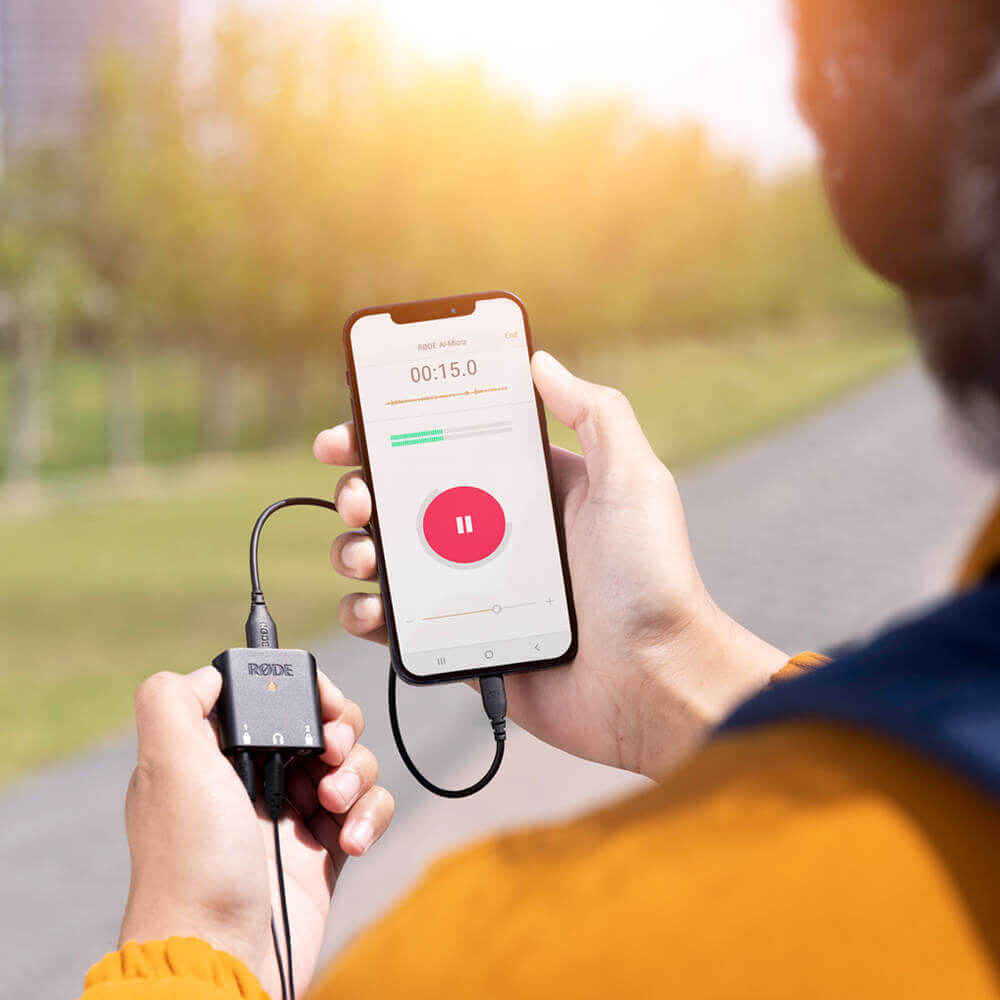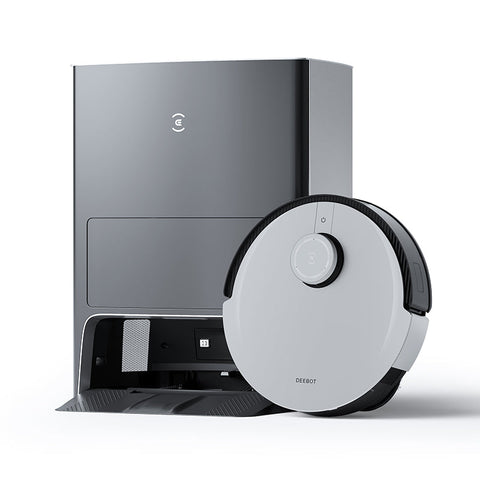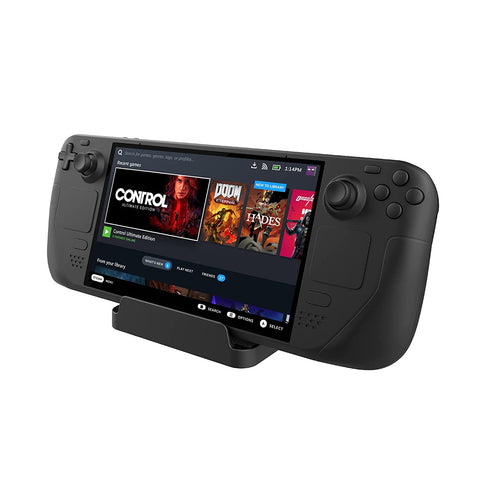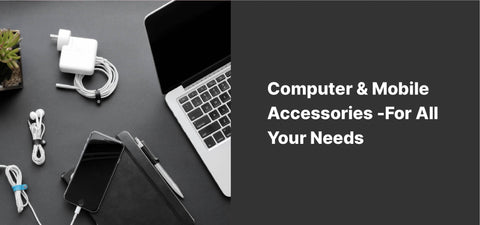Rode AI-Micro Ultracompact 2x2 USB Type-C Audio Interface
The AI-Micro is an ultra-compact dual-channel interface for recording high-quality audio to a mobile device or computer. Featuring two auto-sensing inputs for connecting virtually any microphone with a 3.5mm output, headphone monitoring, a universal USB output for use with smartphones, tablets, and computers, and compatibility with RØDE apps for supercharged sound, the AI-Micro allows you to record without limits.
Key Features:
- Ultra-compact dual-channel audio interface for computers and mobile devices
- Compatible with virtually any microphone with a 3.5mm output, including RØDE VideoMics, lavaliers, wireless systems, and stereo microphones that do not require plug-in power
- Auto-sensing inputs for connecting TRS or TRRS microphones
- High-quality headphone output for zero-latency audio monitoring and playback
- Connects seamlessly to computers, smartphones, and tablets via the universal USB output (USB-A, USB-C, and Lightning cables supplied)
- Compatible with the RØDE app suite for expanded features and functionality, on-the-go configuration, and broadcast-quality recording on any device
Incredible Audio, Anywhere
The AI-Micro allows you to capture high-quality audio on your mobile or computer with ease. It features two 3.5mm inputs for connecting a wide range of microphones, including RØDE VideoMics, lavaliers, and wireless systems like the Wireless GO. These are auto-sensing inputs that detect whether a TRS or TRRS microphone is connected and automatically adapt to accommodate – no adaptors needed. Input 1 can also be configured as a single stereo TRS input for use with stereo microphones that do not require plug-in power.
High-quality microphone preamps and high-resolution (24-bit/48kHz) recording ensure crystal-clear audio capture on any device, with a headphone output for echo-free audio monitoring and playback. Whether you're interviewing, podcasting, presenting, or live streaming, record incredible audio anywhere with the AI-Micro.

Universal Compatibility With All Your Devices
The AI-Micro can connect seamlessly to all your devices via its universal USB output. It is supplied with USB-A, USB-C, and Lightning cables, so you can get recording instantly, and is plug-and-play compatible with Mac, Windows, iOS, and Android devices. The portable recording has never been easier.

Pocket-sized Portability
Weighing less than 20 grams, the AI-Micro is extremely compact and lightweight. Just add two lavalier microphones and you have a complete, studio-quality recording setup that fits in your pocket. Perfect for interviews in the field, on-the-go podcasting, and making video calls or live streaming at home.

AI-Micro User Guide
The AI-Micro User Guide explains everything you need to know about using your AI-Micro. This comprehensive guide covers everything from getting started to updating device firmware and how to access expanded features and functionality with the RØDE app suite, including RØDE Connect, RØDE Reporter, and RØDE Central.

Specifications
| Form Factor | Desktop |
| Display | None |
| Channels of I/O | 2 Inputs / 2 Outputs |
| Maximum Sampling Rate | 48 kHz / 24-Bit |
| Number of Microphone Preamps | 2 Preamps |
| Input Level Adjustment | 2 x via Software |
| Expansion Slots | None |
Signal Processing
| Pad | None |
| Gain/Trim Range | -24 to 0 dB |
| High-Pass Filter | 75 to 150 Hz (via Software) |
| Solo/Mute | None |
Connectivity
| Analog Audio I/O |
2 x 1/8" / 3.5 mm TRRS Unbalanced Mic Input 1 x 1/8" / 3.5 mm TRS Unbalanced Headphone Output |
| Phantom Power | None |
| Digital Audio I/O | None |
| Host Connection / USB | 1 x USB-C (Class-Compliant) |
| Host Connection Protocol | Not Specified by Manufacturer |
| USB (Non-Host) | None |
| Sync I/O | None |
| Network I/O | None |
| MIDI I/O | None |
| Wireless Connectivity | None |
Performance
| Frequency Response | 20 Hz to 20 kHz |
| Headphone Output Power | 125 mW into 32 Ohms |
| Dynamic Range | 100 dB (A-Weighted) |
Digital Audio
| Sample Rates | 44.1 / 48 kHz |
| Sample Rate Conversion | None |
| Bit Depths | 24-Bit |
| Latency | Zero-Latency Direct Monitoring |
| Sync Sources | Internal |
Audio Storage & Playback
| Memory Card Slot | None |
Compatibility
| OS Compatibility | macOS 11 Windows 10.19,041 iOS 14 Android 9.0 *As of November 2021: Check with the manufacturer for the most up-to-date compatibility |
| Included Software | None |
| Compatible Software (Not Included) | Any Core Audio (Mac) Compliant Software |
| Included Plug-Ins | None |
| Supported Drivers/API & Plug-Ins | macOS Class-Compliant (No Driver Needed) Windows Class-Compliant (No Driver Needed) Android Class-Compliant (No Driver Needed) |
| Mobile Device Compatibility | iPad iPhone Android Smartphone Android Tablet |
| Required Hardware | Available Lightning Port, USB-A Port, or USB-C Port |
| Internet Connection | Required for Registration, Software/Driver Download |
Power
| Power Requirements | USB Bus Power |
Physical
| Dimensions | 1.6 x 1.5 x 0.4" / 40 x 38.2 x 11.1 mm |
| Weight | 0.5 oz / 13.0 g |
Packaging Info
| Package Weight | 0.2 lb |
| Box Dimensions (LxWxH) | 5.5 x 3.3 x 1.6" |














